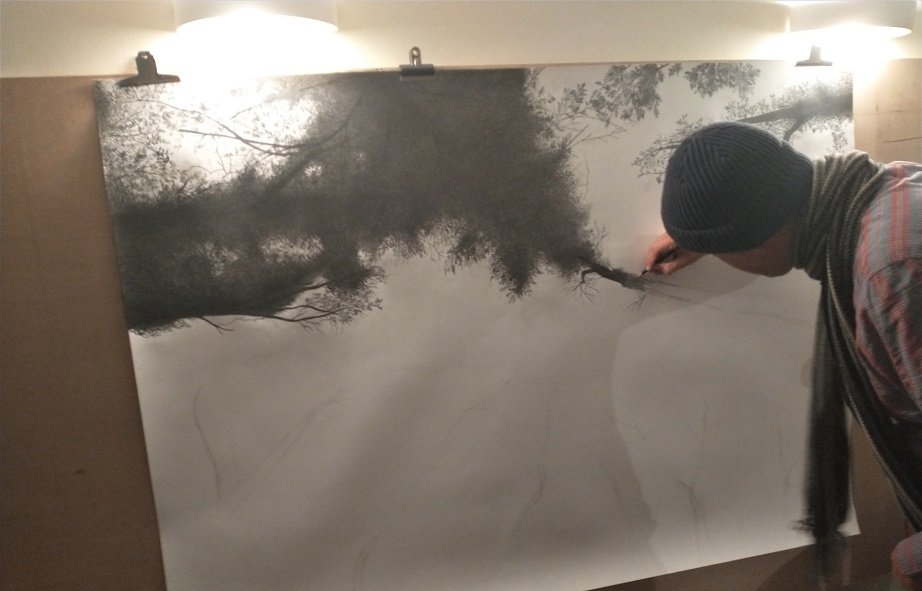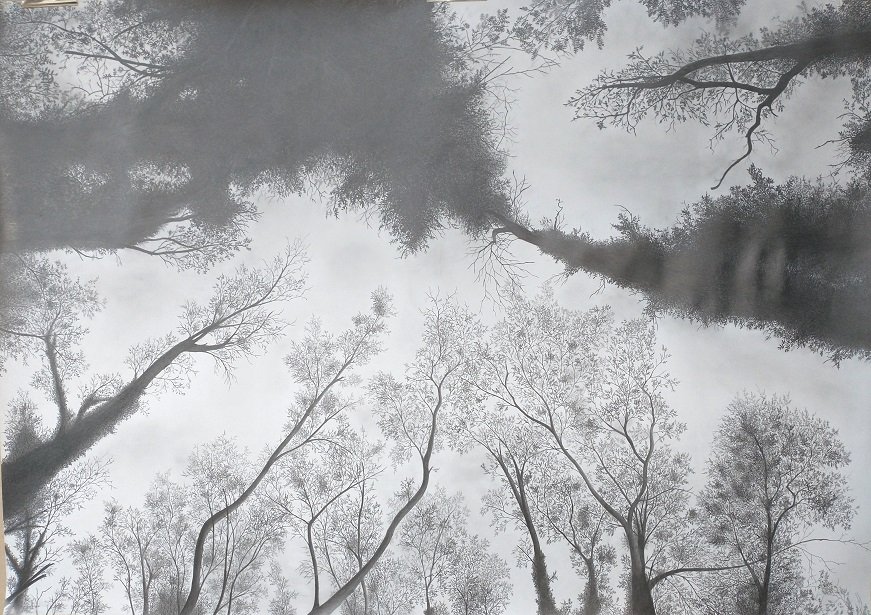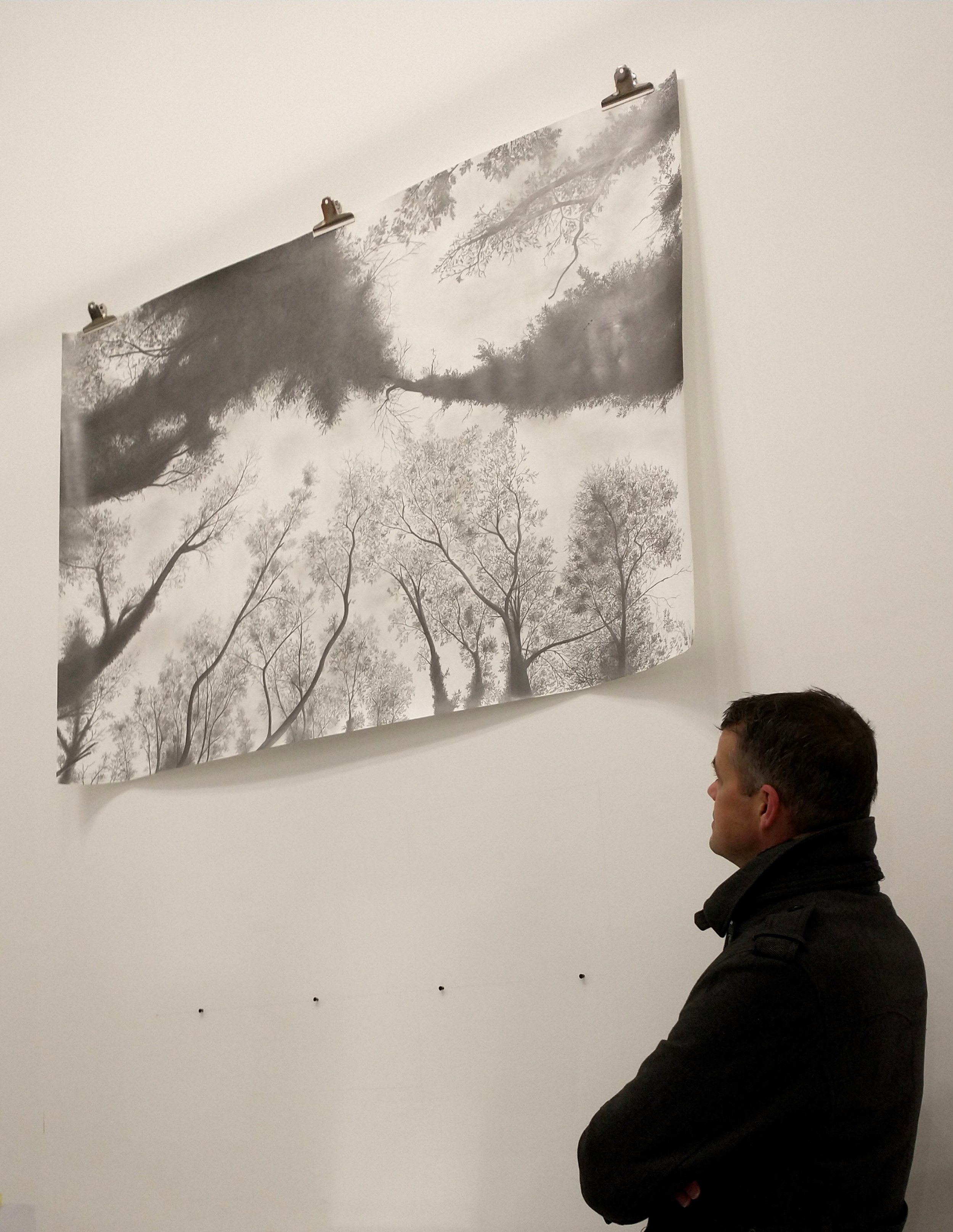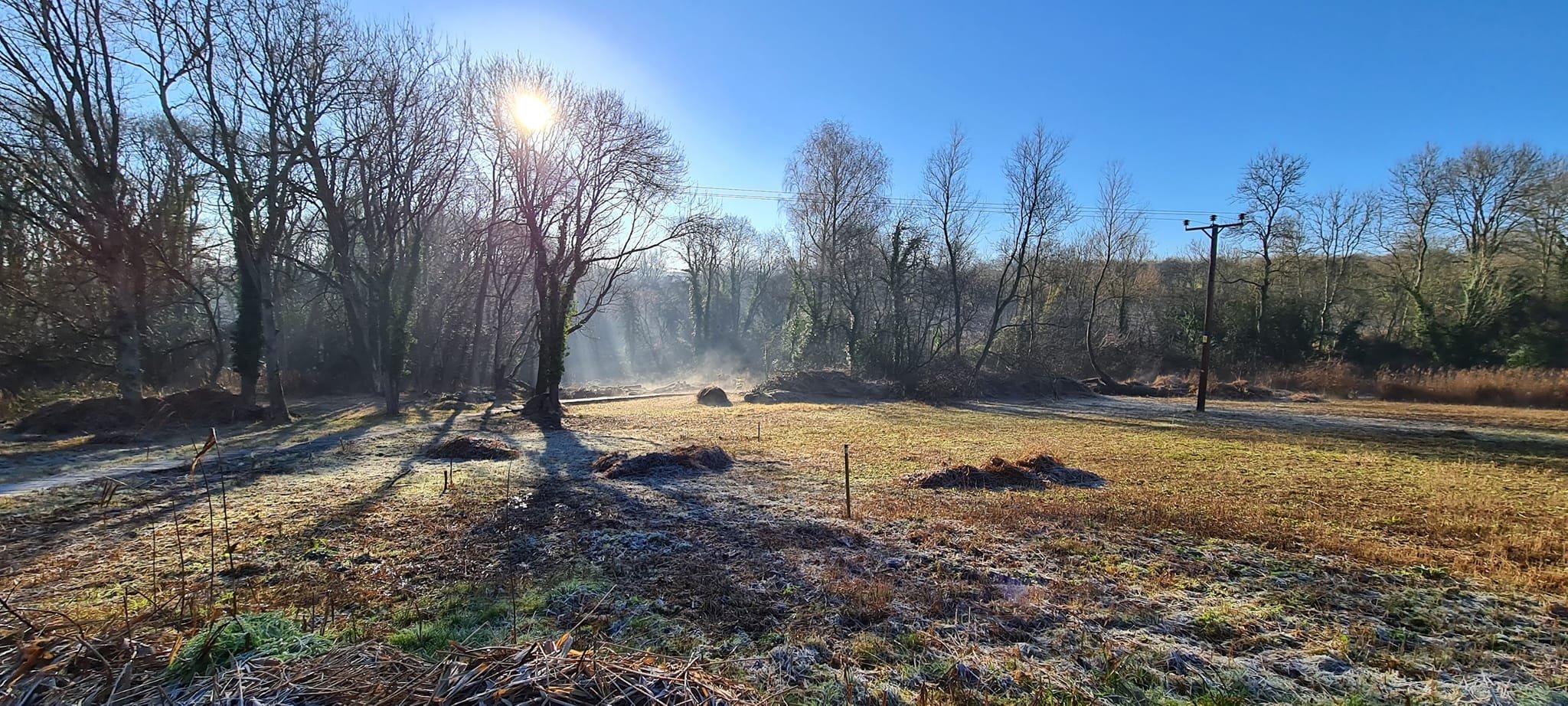In the autumn of 2021, I had been pondering the idea of making a very large drawing for at least year (partly as a lockdown project). Eventually, it developed into the idea of creating a homage to the tree canopy at the Hinksey Heights Nature Trail, where I am a proud volunteer and a director of a newly formed community interest company.
(You can see my new gallery of my evolving body of work inspired by the Trail here on my website: https://www.markrclay.co.uk/hinksey-heights-trail ).
Inspired by a passing comment from a fellow volunteer, the idea struck me to create a drawing that commemorated the arching tree canopy formed over parts of the trail boardwalk by ash trees. Many were falling victim to ash dieback disease and fast approaching the point where they needed to be cut down in order to avoid being a danger to visitors and volunteers alike. This gave me a reason to create something on a large scale as a way to convey the immersive and embracing quality of the trees that I had enjoyed so many times whilst on the trail, and commemorate them after they were gone.
Hinksey Heights Nature Trail, taken in winter 2021/2022.
(Photo: Nick Thorn.)
When I create drawings, or anything else for that matter, I want them to be “about” something. People sometimes ask “what is that a picture of?” and it makes me cringe. For me, this sells the power of drawing way too short, suggesting superficial pictorialism or even a childishness. (I don’t draw pictures, I make drawings!) And at this point, I still felt that my idea was not yet sufficiently “about” anything, and that my still partially formed idea needed further time to gestate. Sure enough, with time that missing ingredient came about in the shape of this poem by Austrian poet Rainer Maria Rilke (1875 - 1926):
How Surely Gravity's Law
How surely gravity’s law,
strong as an ocean current,
takes hold of the smallest thing
and pulls it toward the heart of the world.
Each thing—
each stone, blossom, child —
is held in place.
Only we, in our arrogance,
push out beyond what we each belong to
for some empty freedom.
If we surrendered
to earth’s intelligence
we could rise up rooted, like trees.
Instead we entangle ourselves
in knots of our own making
and struggle, lonely and confused.
So like children, we begin again
to learn from the things,
because they are in God’s heart;
they have never left him.
This is what the things can teach us:
to fall,
patiently to trust our heaviness.
Even a bird has to do that
before he can fly.
by Rainer Maria Rilke
Translation credit and acknowledgement goes to: https://www.thepoetryexchange.co.uk/how-surely-gravitys-law
What struck me first of all was that first stanza. It seemed to convey that sense of the impending fall that the Trail’s ash trees would inevitably face, both succinctly and powerfully. The first reaction people invariably have when they hear that that these lovely trees are doomed to die, and imminently, is an instinctive sadness.
I had found my title.
But, as I read deeper, the poem yielded so much more invaluable thinking. I began to find comfort in it: the emergent idea that there is a natural order or rightness to the world that escapes and eludes our attempts to control it. The poem was telling me what we all knew on the Trail - that there was no human plan or remedy that would save these trees from death and the crashing embrace of gravity at the moment of their ultimate fall.
Rilke’s achievement in this poem is, I think, to make that sense of the fear of the fall into a comforting, even liberating thing. We should trust the process, and not seek to alter or avoid it. And that was what I thought the drawing needed, not just through its title but also the thinking process I went through during the 94 hours of the drawing’s creation. (You have a lot of time to think when you are making a large drawing like this.)



I started this drawing in October 2021 and finished it some two months later in the week before Christmas. It was too big to fit on my studio drawing board so I worked in the (unheated!) conservatory of our house, using a large sheet of plywood as a drawing board. Once it was done, I set off for the Trail with my camera to take some photos and maybe record a few thoughts for this blog entry. As it turned out, I was already too late. The trees were already being cut down, and the view that I had captured in the drawing was gone.
But this sad ending is not really the end of the story at all. The loss of the trees, whilst sad and not a little desolate at first sight, paves the way for the restoration of precious alkaline fenland (of which there are only 19 hectares or so in the entire UK). New trees will grow, new views and vistas have been opened up, and now that we are into the Spring of 2022, nature is playing its miraculous role of healing and renewal. Once again, Rilke put it best:
This is what the things can teach us:
to fall,
patiently to trust our heaviness.
Even a bird has to do that
before he can fly.

